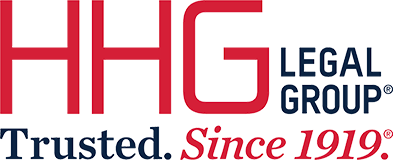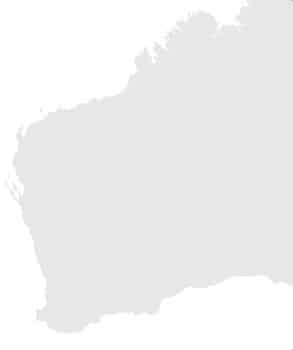In 2008, the sheep and beef cattle industries were the largest animal industries in Western Australia. Although both industries have shrunk in recent years (noticeably during the COVID-19 pandemic), they continue to be some of Western Australia’s largest both domestically and in international markets through live animal exports. With such size and public expectations inevitably comes increased government regulation and the livestock animal industry is no exception. For WA sheep and cattle farmers, having a strong understanding of such regulatory frameworks is essential.
That is not to say that WA farmers are not used to working with the animal welfare laws governing their industry – industry stakeholders are heavily involved in the consultation process when devising new laws, regulations, and standards and guidelines relating to the livestock animal industry. But that close relationship does not mean that the various legislative and regulatory instruments, and how they interact with each other, are easy to understand especially when written in the language of legalese.
As an overview, the legislative framework for cattle and sheep in terms of animal welfare can be summarised as follows:
1. ACTS OF PARLIAMENT
Animal Welfare Act 2002 (WA) – this Act makes it an offence to be cruel to all animals, including cattle and sheep (but interestingly, not including fish or human beings). The main provision of this Act is embodied in section 19 which simply and unambiguously states “a person must not be cruel to an animal”. As an Act of parliament, failures to comply with the Act can result in legal penalties.
2. REGULATIONS
Animal Welfare (Transport, Saleyards, and Depots) (Cattle and Sheep) Regulations 2020 – This Regulation came into effect in October 2020 and, as its name suggests, it applies to both cattle and sheep during the transport process, and while being held in sale yards and depots. Like with the above Act, a Regulation also carries legal weight in that non-compliance with the Regulations can carry with it legal penalties.
Animal Welfare (General Regulations) 2003 – this Regulation seeks to clarify and support the Animal Welfare Act. For example, section 19(2)(b) of the Animal Welfare Act states that a person is cruel to an animal if they use a prescribed inhumane device on the animal. To determine what a “prescribed inhumane device” is, we must look at regulation 3 of the General Regulations which specifies the devices prescribed as inhumane, such as jaw traps. It is clear that to fully understand the Animal Welfare Act, it must be read along with the General Regulations.
3. CODES OF PRACTICE
In the Animal welfare regulatory scheme, a Code of Practice is an umbrella term for non-legal instruments that have been adopted under the Regulations for a specific purpose. Such non-legal instruments can include documents such as Standards and Guidelines. As its name suggests, Standards and Guidelines aim to set out minimum standards for the care and handling of animals and to provide guidelines to assist with compliance with those standards. As Standards and Guidelines are not legislative instruments in the same way as Acts or Regulations, a contravention does not necessarily lead to legal penalties.
That is not to say that a Standard and Guideline adopted as a Code of Practice need not be complied with. For example, should a person be charged with an act of cruelty under section 19 of the Animal Welfare Act, then:
- should the person have failed to follow a relevant adopted Code of Practice, the Courts must take that failure into consideration; and
- compliance with a relevant adopted Code of Practice is a potential defence to a charge of cruelty.
The above highlights two key features of adopted Codes of Practice:
- While compliance with Codes of Practice are not mandatory, doing so can assist WA farmers with compliance with the Animal Welfare Act; and
- Only those Standards and Guidelines that are adopted as Codes of Practice under regulation 6 of the General Regulations may be relied upon.
On the topic of sheep and cattle, the following Standards and Guidelines have been adopted as Codes of Practice under the General Regulations.
- Australian Animal Welfare Standards and Guidelines for Cattle;
- Australian Animal Welfare Standards and Guidelines — Land Transport of Livestock;
- Australian Animal Welfare Standards and Guidelines — Livestock at Saleyards and Depots; and
While the Australian Animal Welfare Standards and Guidelines for Sheep have not yet been adopted as a Code of Practice, these Standards and Guidelines will likely be implemented into a new Regulation late this year.
While there are many other Codes of Practice and Standards and Guidelines that are adopted under regulation 6 of the General Regulations, most are not relevant to cattle and sheep production.
In summary, the law is embodied in the Act and Regulations, and these must be complied with at all times. Adopted Codes of Practice on the other hand merely seeks to provide guidance (not hard and fast rules) to assist WA farmers with compliance with the Act and Regulations.
Clearly, the interlocking laws, regulations, and adopted Codes of Practice surrounding the farming of sheep and cattle are not particularly straightforward or consolidated into a single document. Further, these rules have recently been updated (or are about to be updated) with the Cattle and Sheep Transport Regulations coming into effect last year and with new Regulations likely being introduced regarding cattle and sheep in the near future (possibly by the end of 2021).
In this everchanging legal environment, the phrase “this is how we have always done things” is a potentially dangerous state of mind that could lead to unwitting contraventions and penalties. New community values and expectations reflected in the livestock animal laws and regulations such as the Cattle and Sheep Transport Regulations mean that WA farmers may need to rethink and update their approach to the handling and transport of cattle and sheep to ensure compliance with the law. The first step is always having a clear understanding of the surrounding law and accompanying regulatory framework.
Our team is highly skilled and experienced in providing holistic and practical legal solutions for the Agribusiness sector. Contact us today if you need advice or representation in this area.
*This information serves as a general guide and does not constitute legal advice. It is based on our research and experience at the time of publication. Please consult our knowledgeable Legal Team for any specific inquiries or advice relevant to your circumstances, as the content may not have been updated subsequently.


